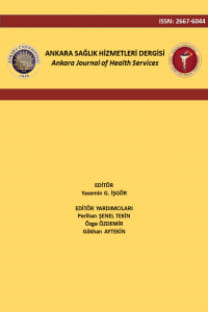Çocukluk ve Ergenlik Döneminde Psikososyal Risk Faktörleri ve Koruyucu Unsurlar
Psikoloji-psikiyatri, psikolojik danışma ve rehberlik ve eğitim bilimlerinin başlıca ilgi alanlarından biri olan psikososyal risk faktörleri ve koruyucu unsurlar, çocukluk ve ergenlik dönemlerinde bireylerin psikolojik sağlamlıklarını etkileyen önemli unsurlardan biridir. Bireylerin zorlu yaşam koşullarında nasıl tepkiler verdiklerini ve bu süreci etkileyen faktörlerin anlaşılmasını sağlayan koruyucu unsurlar özellikle son 30 yıldır psikolojik sağlamlık bir diğer adıyla yılmazlık çerçevesinde değerlendirilmiş ve gerekli çalışmalar yapılmıştır. Yapılan çalışmalar çocukluk ve ergenlik döneminde bireysel, ailesel ve çevresel odaklı birçok risk etkeninin olabileceğini ve bireylerin psikolojik sağlamlık düzeylerinin bu risk faktörleriyle baş etmede önemli bir unsur olabileceğini göstermiştir. Bu doğrultuda bu çalışmada çocukluk ve ergenlik döneminde karşılaşılan psikososyal risk faktörleri ile koruyucu ve önleyici stratejiler üzerinde durulmuştur.
Anahtar Kelimeler:
psikososyal riskler, koruyucu unsurlar, psikolojik sağlamlık
Psychosocial Risk Factors and Protective Elements in Childhood and Adolescence
Psychosocial risk factors and protective factors, which are one of the main areas of psychology-psychiatry, psychological counseling and guidance and educational sciences, are one of the important factors affecting psychological resilience of individuals in childhood and adolescence. The protective elements that help us understand how individuals respond in difficult living conditions and the factors affecting this process have been evaluated in the frame of psychological resilience in the last 30 years and the necessary studies have been carried out. Studies have shown that there may be many risk factors that are individual, familial and environmental oriented during childhood and adolescence, and that the levels of psychological resilience of individuals can be an important factor in dealing with these risk factors. Therefore, the aim of this study is to determine the psychosocial risk factors and preventive and preventive strategies encountered in childhood and adolescence.
Keywords:
psychosocial risks, protective elements,
___
- [1]. Gizir, C. A. (2006). Psikolojik sağlamlık, risk faktörleri ve koruyucu faktörler üzerine bir derleme çalışması. Türk Psikolojik Danışma ve Rehberlik Dergisi, 3(28). [2]. Arslan, G. (2015). Psikolojik istismar, psikolojik sağlamlık , sosyal bağlılık ve aidiyet duygusu arasındaki ilişki.Mehmet Akif Ersoy Üniversitesi Eğitim Fakültesi Dergisi, 47–58.[3]. Joseph, S. (2015). Positive Psychology in Practice, 773–788.[4]. National Center for Mental Health Promotion and Youth Violence Prevention. (2004). Risk and Resilience: Risk Factors for Violence and the Abuse of Tobacco , Alcohol, and Other Drugs, (July), 1–5.[5]. Karataş, Z., & Çakar, F. S. (2011). Self-esteem and hopelessness, and resiliency: an exploratory study of adolescents in turkey. International Education Studies, 4(4), 84–91. https//:doi.org/105539/ies.v4n4p84[6]. Barfield, S. T. (2004). “Best Practices” in Early Childhood Mental Health Programs for Preschool-Age Children. A Report to the Kansas Department of Social and Rehabilition Services[7]. Child Welfare Information Gateway. (2004). Risk and protective factors for child abuse and neglect. Emerging Pratices in the Preventon of Child Abuse and Neglect, (February), 1–7. [8]. Şimşek, Z., Erol, N., Öztop, D., & Özer Özcan, Ö. (2008). Kurum bakımındaki çocuk ve ergenlerde davranış ve duygusal sorunların epidemiyolojisi; ulusal örneklemde karşılaştırmalı bir araştırma. Türk Psikiyatri Dergisi, 19(3), 235–246.[9]. Cumberland-Li, A., Einsberg, N., Reiser, M . (2004). Relations of children’s agreoableness and resiliency to effortful control and impulsivity. Social Development. 13(2), 193-212. [10]. Eşel, E. (2005). Kadın ve erkek beyninin farklılıkları. Klinik Psikofarmoloji Bülteni. 15(3), 138-152.[11]. Siyez, D.M. (2006). 15-17 yaş arası ergenlerde görülen problem davranışların koruyucu ve risk faktörleri açısından incelenmesi. (Yayımlanmamış doktora tezi). Dokuz Eylül Üniversitesi. Eğitim Bilimleri Enstitüsü, İzmir[12]. International Center for Assault Prevention. (2001). Statistics. Retrieved February 18, 2018 from http://www.internationalcap.org/abuse_statistics.html[13]. Dilsiz, H., & Mağden, D. (2015). Öğretmenlerin çocuk istismarı ve ihmali konusunda bilgi ve risk tanım düzeylerinin tespit edilmesi. Hacettepe University Faculty of Health Sciences Journal, 1, 368–377.[14]. Aktepe, E. (2009). Childhood sexual abuse. Journal of Interpersonal Violence, 1(2), 95–119.[15]. Werner, E. (2005). Resilience and recovery: findings from the kauaı longitudınal study. Staff of the Research and Traınıng Center on Family Support and Children’s Mental Health Regional, 19(1), 11-14. [16]. Kandel, E., Mednick, S. A., Kirkegaard- Sorensen, L., Hutchings, B., Knop, J. ,Rosenberg, R. Ve Schulsinger, F. (1988). IQ as a protective factor for subjects at high risk for antisocial behavior. Journal of Consulting and Clinical Psychology, 56, 224-226.[17]. Compas, B. E., Connor-Smith, J., & Jaser, S. S. (2004). Temperament, stress reactivity, and coping: Implications for depression in childhood and adolescence. Journal of Clinical Child & Adolescent Psychology, 33, 21–31. http://dx.doi.org/10.1207/S15374424JCCP3301_3.[18]. Seccombe, K. (2002). “Beathing the odds” versus “Changing the odds” poverty, resilience and family policy. Journal Of Marriage and Family. 64, 384-394.[19]. Ripple, C. H. ve Luthar, S. (2000). Academic risk among iner-city adolescents: The role of personal attributes. Journal of School Psychology, 38, 277-298.[20]. Çapan, B. E., & Arıcıoğlu A. (2014). Psikolojik sağlamlığın yordayıcısı olarak affedicilik. e-International Journal of Educational Research, 5, 70-82[21]. Ostemdorf, C. L. (2000). Effects o f a forgiveness education intervention with adult children of alcoholics. (Unpublished Doctoral Dissertation). University of Wisconsin Madison.[22]. Faison, M. V. (2007). The relationship of forgiveness to psychological resilience and health among African Amerıcan women. (Unpublished Doctoral Dissertation). Capella University.[23]. Jaffee, S. R., & Gallop, R. (2007). Social, emotional, and academic competence among children who have had contact with child protective services: Prevalence and stability estimates. Journal of the American Academy of Child & Adolescent Psychiatry, 46,757–765. http://dx.doi.org/10.1097/chi.0b013e318040b247.[24]. Eminağaoğlu, N. (2006). Güç koşullarda yaşayan sokak çocuklarında dayanıklılık (sağlamlık). E.Ü. Sosyal Bilimler Enstitüsü[25]. National Center for Mental Health Promotion and Youth Violence Prevention. (2006). Risk and Resilience: Risk Factors for Violence aPsychological Resilience 1–
- Yayın Aralığı: Yılda 2 Sayı
- Başlangıç: 2000
- Yayıncı: Ankara Üniversitesi
Sayıdaki Diğer Makaleler
Çocukluk ve Ergenlik Döneminde Psikososyal Risk Faktörleri ve Koruyucu Unsurlar
Haktan DEMİRCİOĞLU, Ceren YOLDAŞ
Yenidoğanda Ağrı: Değerlendirme, Yönetim ve Hemşirenin Rolü
Damla ÖZÇEVİK, Ayşe Ferda OCAKÇI
İdiopatik Periferik Fasial paralizide Beyin Sapı Uyarılmış Potansiyelleri
